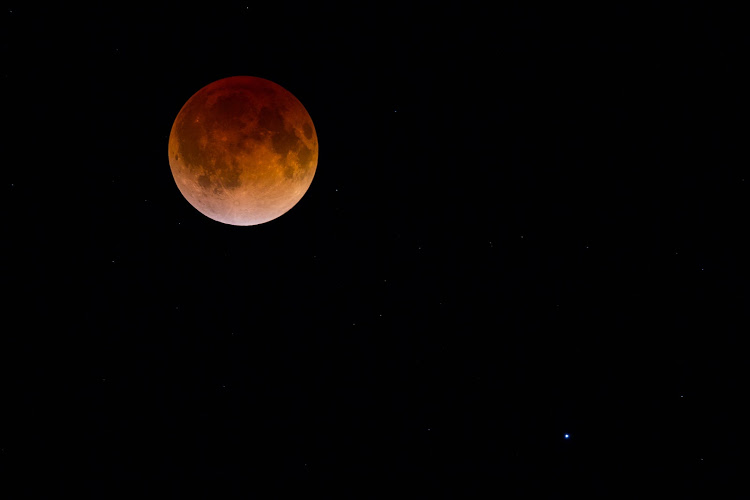New Delhi/Bengaluru: Tens of thousands of skywatchers across the country burned the midnight oil on Friday night for the longest “blood moon” of the century but many in the north were disappointed because they couldn’t watch the astronomical delight because of a thick cloud cover.
People were out on roads or their rooftops and terraces to watch the moon turning red — the longest celestial event of the 21st century that lasted for about two hours.
In Delhi, some 2,000 stargazers were at the Nehru Planetarium to witness total lunar eclipse. But they returned disappointed because monsoon clouds spoiled the show with Delhi like many other parts of north India missing their date with “the blushing” bride — the moon which turned red.
The phenomenon is caused because the Earth blocks all direct sunlight from reaching the moon. But the indirect sunlight is refracted by the Earth’s atmosphere. Only the refracted red light, with longer wavelength, travels the distance and passes to the moon and other colours are filtered out.
People in other parts of the country enjoyed the once in a century celestial event.
Hundreds flocked to the Jawaharlal Nehru Planetarium in the tech hub of Bengaluru on a chilly Friday night to witness the spectacle in a hazy sky even as the red moon played hide and seek.
“About 3,000 visitors, including students accompanied by their parents, visited the planetarium between 11.54 p.m. and 4.58 a.m. to view the longest lunar eclipse through telescopes,” the Director of Jawaharlal Nehru Planetarium Pramod G. Galgali told IANS here.
Scores of skygazers queued up in the open area of the planetarium where 10 huge telescopes were set up to watch the eclipse from a vantage point.
The thick monsoon clouds over the city, however, restricted a clear view of the eclipse, disappointing several photography enthusiasts.
“There was a clear sky for about 45 minutes during the eclipse when the skywatchers could view the phenomenon,” Galgali said.
The eclipse began at 10.44 p.m. on Friday night ending at 4.58 a.m. on the wee hours of Saturday. The period when the moon was completely in Earth’s shadow, known as the ‘totality’, lasted for about an hour and 43 minutes.
In the city’s Town Hall in the downtown, about two kilometres away from the planetarium, about 100 men, including rationalists, lawyers, doctors, students and academics gathered to celebrate the historic event in revelry, partying and merry-making.
Many, especially Hindus, completed their dinner early by 8 p.m. on Friday and ate nothing till the eclipse came to an end. They took a bath before resuming their day on Saturday to wash off what they consider evil effects of eclipse.
Many across the country marked the celebrations by consuming food and cutting cakes to prove that nothing would happen if one eats during the eclipse — mocking at the superstitious beliefs and blind faiths of astrologists.
As many feared the lunar eclipse to be inauspicious, several temples were shut early on Friday night.
Tens of thousands of devotees thronged temples across at many places in the country after the eclipse on Saturday morning to perform special rituals after cleaning the temple premises.
In the run up to the event, several pregnant were strictly ordered by their families to stay indoors and due to the belief that the lunar eclipse is harmful for the foetus.
In Tamil Nadu, a large number of people saw the captivating lunar eclipse at the B.M. Birla Planetarium which had made special arrangements with high-powered telescopes. In the case of some people, whose birth star concided with the eclipse, performed special poojas in temples to ward off or adverse evil effects of the eclipse.
IANS

